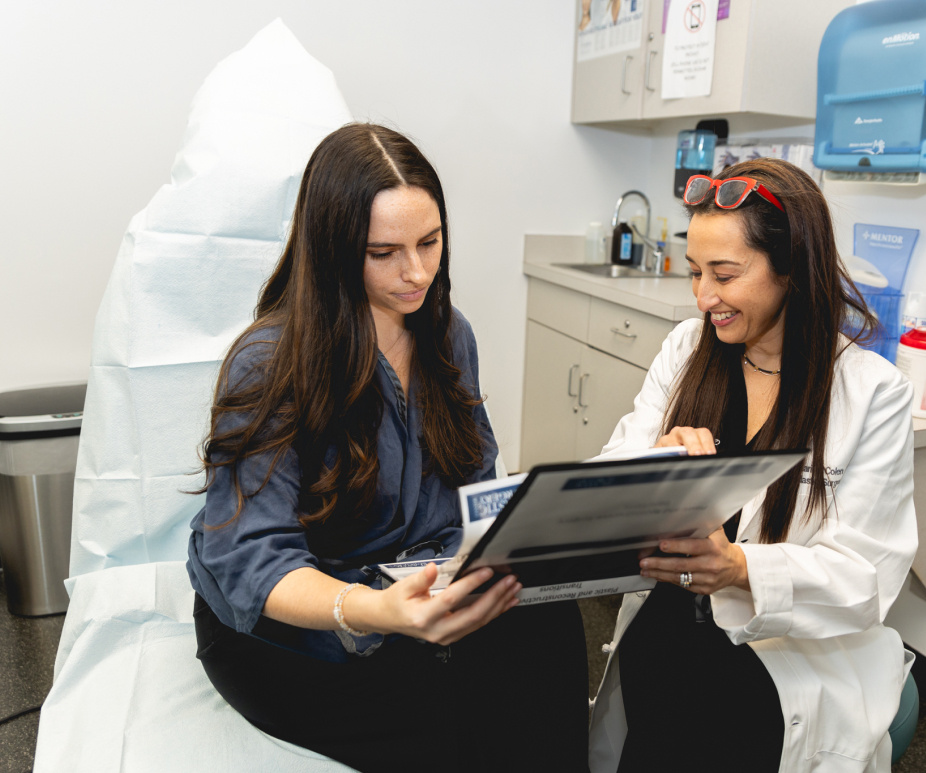Hamid Abdollahi
MD, FACS
Plastic & Reconstructive SurgeonDouble Board Certified in Plastic Surgery and Surgery
Patients may choose excisional biopsy over other biopsy methods because it allows for complete removal and examination of the suspicious lesion, providing a definitive diagnosis to guide further treatment. Additionally, excisional biopsy is considered the gold standard for obtaining a complete tissue sample for analysis, which can lead to more accurate results compared to less invasive techniques.
Improvements and results patients can expect from an excisional biopsy include:
Patients are generally considered suitable candidates for an excisional biopsy if the suspicious lesion or abnormality is localized and accessible for surgical removal. Factors that would disqualify someone include an inability to undergo anesthesia or surgery due to significant medical comorbidities, or if the patient has a bleeding disorder or takes medications that increase the risk of excessive bleeding during the surgery. Additionally, patients with certain infections or active inflammatory conditions may need to delay an excisional biopsy until the underlying condition is brought under control. Overall, the decision to proceed with an excisional biopsy is made on a case-by-case basis, taking into account the patient's overall health status, nature & location of the lesion, and potential risks versus benefits of the surgical procedure.

Prior to an excisional biopsy, the patient can expect to undergo a pre-operative evaluation, including a review of their medical history, physical examination, and any necessary imaging or lab tests. The surgical team will explain the procedure in detail, obtain informed consent, and provide instructions on preparing for the surgery, such as fasting beforehand and stopping certain medications.
During the excisional biopsy, the patient is first given a local anesthetic to numb the area around the lesion. In some cases, the patient may also receive intravenous sedation to help them remain relaxed and comfortable throughout the procedure. The surgeon then makes a small incision and carefully removes the entire lesion, along with a margin of surrounding healthy tissue. This excised sample is sent to a laboratory for detailed analysis.
Once the biopsy is complete, the incision is closed with sutures or surgical staples. The patient is monitored for a short time to ensure there are no immediate complications, such as bleeding or infection. Before being discharged, the patient will receive instructions on wound care, activity restrictions, and any necessary follow-up appointments.
In the period immediately after the excisional biopsy, the patient may experience some mild discomfort or soreness at the incision site. Over-the-counter pain medication can help manage this. The surgical team will provide guidance on when the patient can resume normal daily activities, typically within 1-2 weeks as the incision heals.
The recovery process after an excisional biopsy is generally straightforward, with most patients able to return to their normal daily activities within 1-2 weeks.
In the first few days following the procedure, patients may experience some mild pain, swelling, and bruising at the incision site. Over-the-counter pain medications like acetaminophen or ibuprofen can help manage any discomfort. The surgical team will provide instructions on how to care for the incision, including keeping it clean and dry during the healing process. Patients are typically advised to avoid strenuous activities or heavy lifting during this initial recovery period to prevent any disruption to the surgical site.
Within a week or two, as the incision begins to heal, patients can gradually resume their normal routine. The sutures or staples used to close the incision are usually removed within 7-14 days. By this time, the majority of patients report minimal, if any, residual pain or limited mobility. As long as the surgical site heals properly without signs of infection or other complications, patients can expect to make a full recovery without significant long-term effects. Regular follow-up appointments with the surgeon help ensure the biopsy site continues to heal as expected.
The Breast Center of New Jersey hand-selects every member of our elite team. As a proud division of The Institute, our expertise is rooted in extensive research and benchmarked by hundreds of published papers and articles that prove our development, understanding, and delivery of life-changing care.
Risks are generally low but may include minor bleeding, infection, or changes in sensation at the incision site. Your surgical team will discuss these risks with you in detail and take steps to minimize them.
Most health insurance plans do cover excisional biopsies when deemed medically necessary. We recommend checking with your insurance provider to understand your specific coverage and any out-of-pocket costs you may be responsible for.
The time to receive your biopsy results can vary, but you can typically expect to get the findings within 5-7 business days. We will be in close communication with you throughout the process.
No, you will need to arrange for someone to drive you home after the excisional biopsy, as you will have received sedation during the procedure.
Most patients can return to their regular routine within 1-2 weeks, as directed by your surgical team. They will provide specific guidance on when you can safely resume work, exercise, and other activities.
